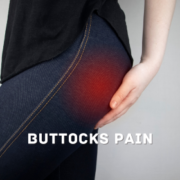Review of Cold Laser Therapy
Light therapy, or photobiomodulation therapy (PBMT), is a medicinal use of light. The most popular particular kind of photobiomodulation treatment (PBMT) is called “cold” or low-level laser therapy (LLLT), however this is only a colloquial phrase.(1) The photobiomodulation song has several riffs, laser light being only one of them. For example, even tanning beds may be categorized as PBMT (promoting the formation of vitamin D), while far-infrared saunas are marketed as having the ability to emit therapeutic heat waves.(2)
But because it’s entertaining and somewhat accurate, I’ll talk primarily about “lasers” in this post.
Cranks and quacks appear to be drawn to lasers, and there is a significant correlation between laser treatment and a great deal of fraud and crap. Critics of laser treatment are unforgiving.(3)
The main notion is that, instead of, you know, burning a hole in you like a starship warrior, lasers may apparently accelerate healing. Indeed, claims regarding the health benefits of almost every type of light exist! However, red, infrared, and lasers in particular are the most popular.
All of them are believed to benefit cells, hastening the healing process of injured tissue or completing it when it is having difficulty. Although laser therapy is sometimes referred to as “cold” laser therapy, it is not only a painkiller and does not involve heating tissues in any way.(4) It is significant if it succeeds.
Laser therapy is a prime example of premature hype surrounding a futuristic, “high-tech,” and unproven therapy: clinical practice advances far faster than science, which is still in its infancy, and all hopes are pinned on hazy and unverifiable biological plausibility and research rife with wishful and fantastical theories about how it works rather than concentrating on whether or not it works at all.(7)
All of these treatments always give rise to the hope that, with the right settings for the right patients, they will work wonders; turn the dials just so, and wonderful things will happen. However, no one can ever seem to confirm exactly what the right settings are or who the right patients are. Rarely does anything work out, but most don’t, or don’t work out at all, even when there are truly promising basic biological impacts.(8) It’s quite difficult to come up with a successful example of a technology therapy.
Sure, there are supporters of laser therapy! and its unavoidably “promising” but questionable evidence.
The evidence that’s not really promising
This research was brought to my notice by an informed reader who wanted to convince me to give laser treatment some serious thought. An excellent assessment of 17 studies concerning LLT especially for the “short-term” therapy of muscle injuries was published in 2014 by Alves et al.(9) They discovered that it enhanced muscle repair, decreased inflammation, and promoted the formation of new blood vessels. “Excellent therapeutic resource for the treatment of skeletal muscle injuries,” according to the reviewers. This sounds excellent. It seems to be the greatest scientific assessment on this subject to date, in fact. But there’s a catch. It appears that there always is.
Only animals! Because they are the only research that need to be reviewed, they were only looking at studies that used animals. 2018 saw the continued lack of even one human experiment (more precisely, one for straining muscles). Animal studies are obviously insufficient. Human animals frequently respond poorly to what works on other animals, and vice versa.
On this subject, there is essentially no compelling clinical science. These days, it’s common to find a lot of low-quality research demonstrating inconsistent and insignificant impacts. The absence of strong data does not imply that laser therapy is ineffective; rather, it casts it in doubt and draws attention to the questionable lack of progress made in generating stronger evidence. This implies that laser treatment can only be based on hope at this point and cannot yet be regarded as evidence-based. All we can do is make an effort to weigh the risks, expenses, and believability in a logical manner.
Until 2021, at least, there was no convincing proof……
For back pain, real laser treatment is no more effective than a red LED with less power
Unexpectedly, a brand-new, excellent study was released in the journal Pain in 2021.11 An excellent research conducted on humans. in a quality diary. It’s the first of its type, I think.
In this specific experiment, the placebo was very well-suited. and rather comical.
Guimarães et al. treated 148 Brazilians with chronic, unexplained low back pain by comparing laser treatment to a premium placebo. In addition to a few additional secondary metrics, pain and disability were monitored for a full year. In a month, patients received twelve treatments. The other half got some subdued red light, while the other half had actual laser therapy!
The fake gadget was identical to the actual one; it only didn’t release a medicinal dosage and had its business end deactivated.
The fascinating outcomes
What then transpired? As one might anticipate from someone with a reasonable degree of cynicism, there was no discernible difference between the real deal and the imitations.
More precisely, after one, three, six, or twelve months, there was no statistically significant variation in pain intensity, overall impairment, or any secondary outcome.Thirteen
Even though this is “just one study,” it’s a strong one, and this is one of the few instances when I believe the journal’s caliber and reputation are really relevant. The majority of laser treatment research has been published in tiny, obscure publications. This one truly sticks out, and the trial itself truly fulfills all the requirements, just as I had anticipated. In contrast to several other research in this subject, its purpose was to provide a solution to the query sufficient in both size and quality. This one has a lot going for it, but nothing is flawless.14
Stay tune for Part 2 which includes
- Naturally, this is not the final word in laser research.
- What is the probability that lasers promote healing? in people?
- LEDs versus lasers
- Costs of laser treatment
- Dangers of laser treatment
- Advice
- Refernces
Do not forget to share !!!!









